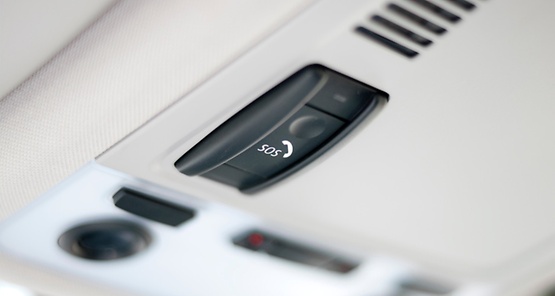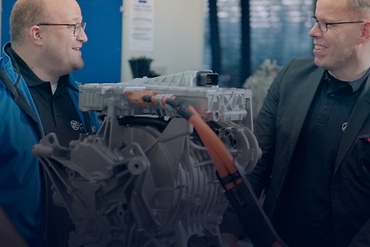
Contributed by Frédéric Couturier
May 28, 2024
5 minutes read
The eCall system in a nutshell
What is the eCall system?
eCall is short for "emergency call" an automatic safety system based on the European emergency number 112 and geolocation.
It is in fact an emergency device installed in the car that can be activated automatically or manually to call 112 for help.

Is eCall compulsory?
eCall is an European Commission initiative concerning vehicles sold in the EU. It is in line with road safety objectives and concerns to reduce the number of deaths on Europe's roads.
In 2015, the European Parliament made eCall compulsory for all new vehicle models. The measure came into force in 2018 and eCall is expected to be rolled out across the entire vehicle fleet by 2035.
What is eCall used for?
eCall is an emergency system that allows you to call the European emergency number 112 to summon help, for example in the event of a road accident. The aim of eCall is simply to improve the safety of motorists by shortening the time between an accident and the intervention of the emergency services.
For example, the existence of eCall means that it is not necessary to wait for witnesses to call for help. In some cases, such as accidents with no witnesses, eCall can save lives very simply by contacting emergency services that would not have been called without it, or not for a long time.
What's more, eCall is associated with a geolocation system that not only reduces the need for witnesses, but also simplifies victim care. It makes it easier to locate an accident vehicle, particularly when it is difficult to locate, when it is alone in an accident on a road with little traffic, when its occupants are unable to communicate their location, and so on.

In emergency care, we sometimes talk about the "golden hour", according to which seriously injured people have the best chance of survival if they undergo surgery within an hour after their accident. In fact, most seriously injured people die within a few hours of the accident.
The eCall system reduces the time needed to help emergency services get to the scene of an accident, maximizing the victim's chances of survival. It is estimated that eCall can reduce emergency response times by 60% in urban areas and 50% in rural areas.
Functionality of eCall
How does eCall work?
In the event of an accident, the eCall emergency call system can be activated manually (by pressing a button) or automatically (if no occupant can activate it).

1. Emergency call
The vehicle's SIM card sends an emergency call to 112 (after manual action or a major impact on the vehicle).
2. Geolocation
The vehicle's position is determined by satellite and terrestrial relays. It is automatically transmitted to the emergency services, along with other authorized data, such as the vehicle model, the fuel used and the number of passengers in the vehicle. This set of information is known as the MSD - Minimum Set of Data.
3. Identification
The center receiving the emergency call integrates the information transmitted. An operator tries to communicate with the occupants via the vehicle's audio system, to gain a better understanding of the situation.
4. Dispatch of emergency services
If the vehicle's occupants do not respond, or if the situation requires it, the emergency services (ambulance, fire brigade, police, etc.) will be dispatched to the scene. eCall saves a great deal of time in organizing emergency services. The maximum declared time between the vehicle being called and the emergency services being put in touch is one minute and fifteen seconds.
Conclusion
The eCall is a system that can save lives. That's why we've made it compulsory in Europe! It works 24/7, wherever you are in the EU, and the system costs nothing. It has been compulsory for new models since 2018 and is therefore included in the price of the vehicle. It's free to use and communicate with, and you don't need a subscription to use eCall; call charges are paid by the assistance companies.
About the author

Frédéric Couturier
Frédéric is braking and clutch product manager at ZF Aftermarket France
“Braking is more than ever at the heart of electric vehicles and it’s a challenge.”


![[pro]Academy [pro]Academy](/media/master/service-images/zfa_pc_training_img_clutch-centering-tool-01_wxh_cmyk_2017-11_un-progressive_bs_32_xl_4.jpeg?v=1125971310)